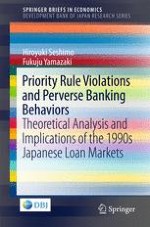2017 | Supplement | Buchkapitel
3. Fundamental Structure of Our Model and the Result in the Case with no APR Violations
verfasst von : Hiroyuki Seshimo, Fukuju Yamazaki
Erschienen in: Priority Rule Violations and Perverse Banking Behaviors
Verlag: Springer Singapore
Aktivieren Sie unsere intelligente Suche, um passende Fachinhalte oder Patente zu finden.
Wählen Sie Textabschnitte aus um mit Künstlicher Intelligenz passenden Patente zu finden. powered by
Markieren Sie Textabschnitte, um KI-gestützt weitere passende Inhalte zu finden. powered by
